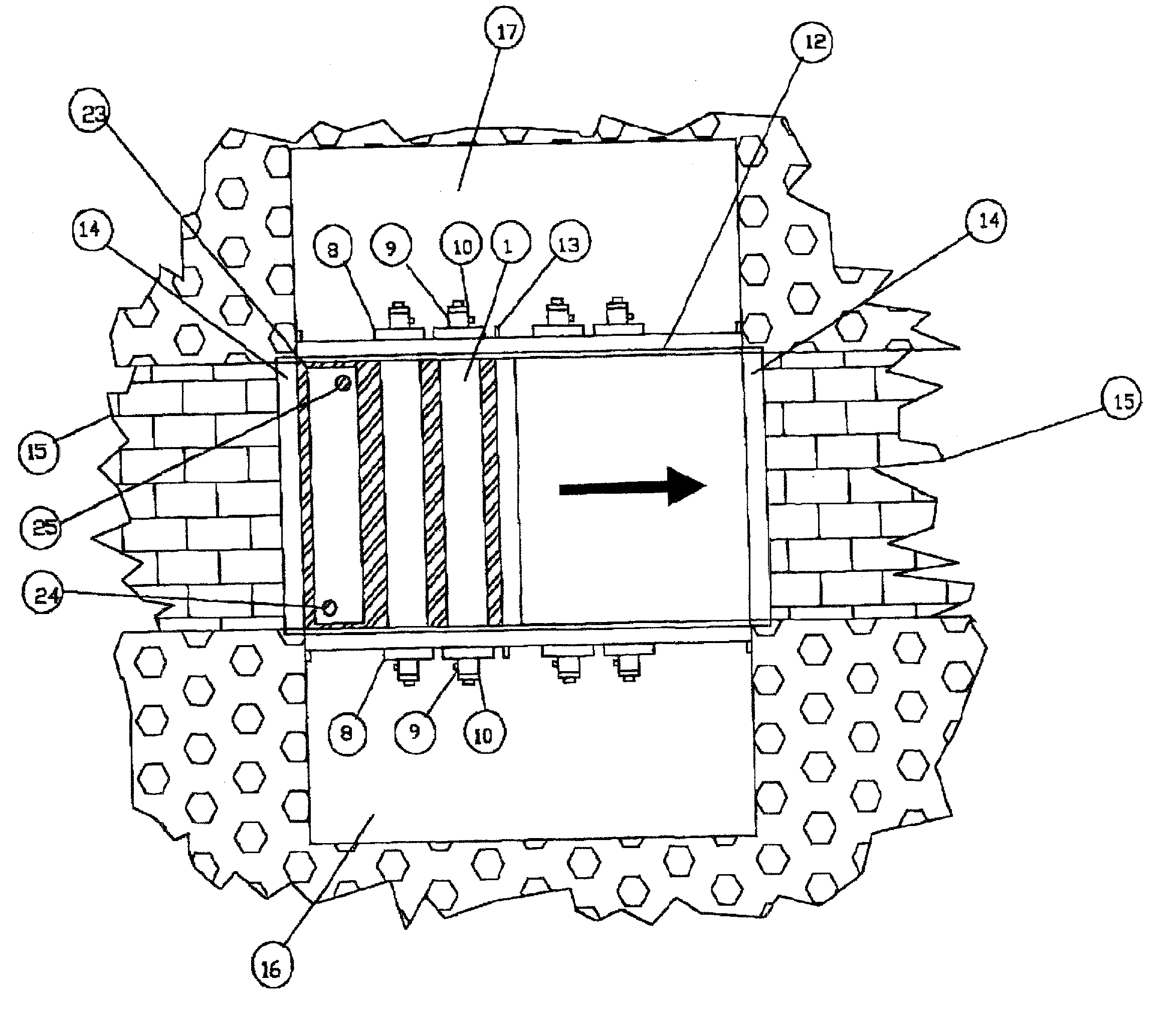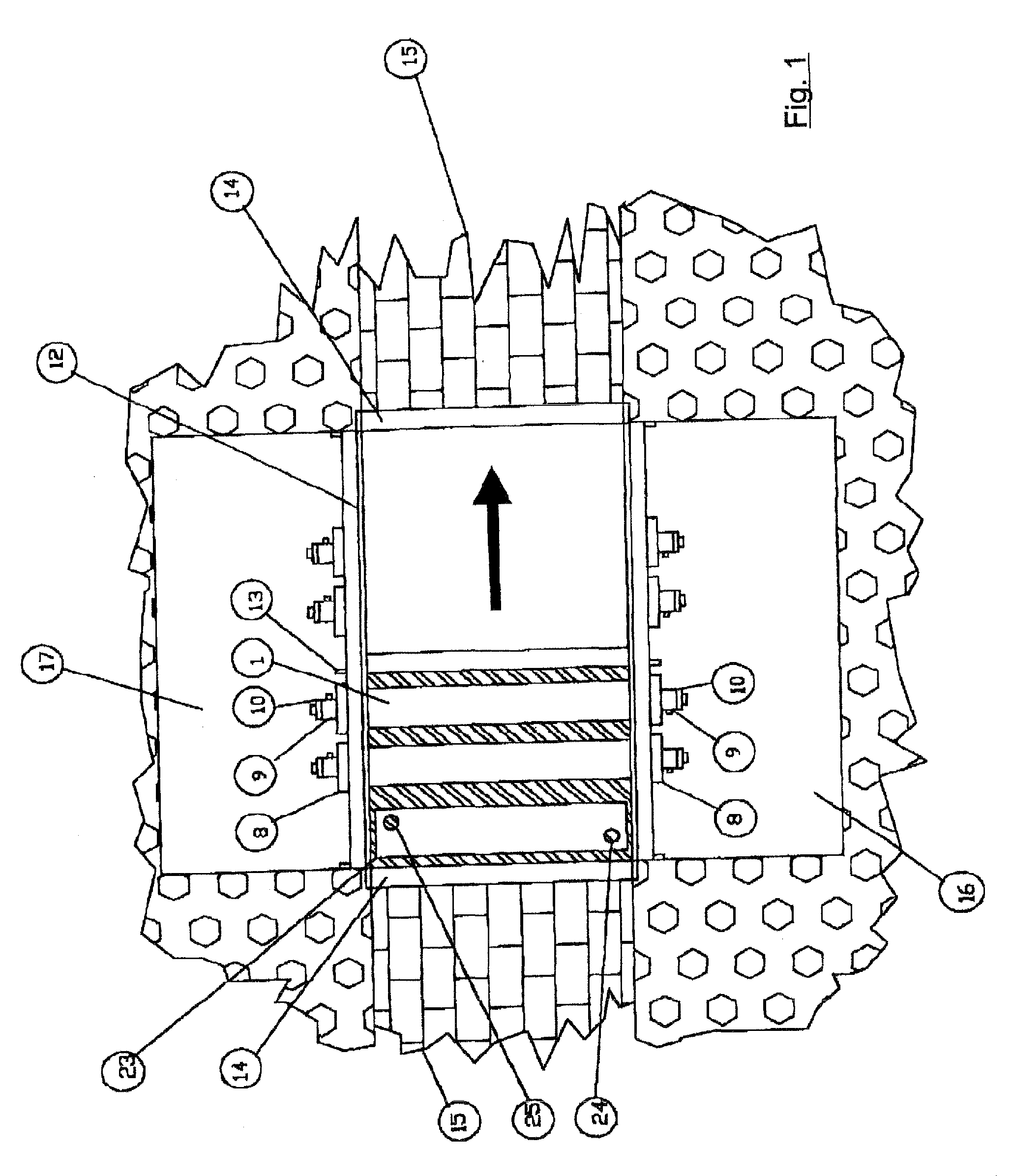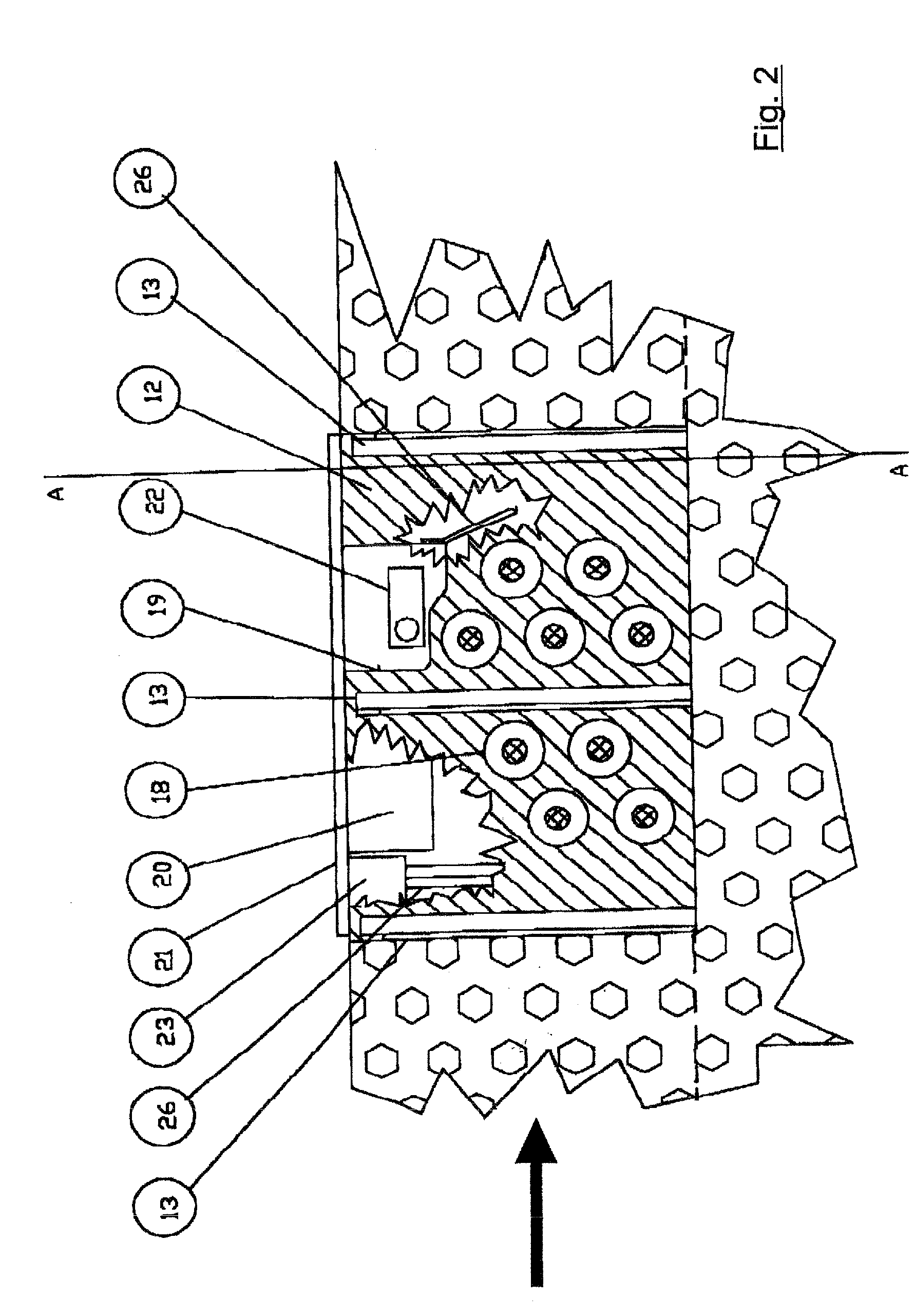Device for Irradiating Liquids with Uv Radiation in a Throughflow
a technology of liquid irradiation and throughflow, which is applied in the direction of flow control, filtration separation, lavatory sanitory, etc., can solve the problems of large space required, difficult to remove, and high cost of operation and maintenance, and achieve the effect of simplifying maintenan
- Summary
- Abstract
- Description
- Claims
- Application Information
AI Technical Summary
Benefits of technology
Problems solved by technology
Method used
Image
Examples
Embodiment Construction
[0055]The invention will be described in detail in the following, on the basis of a preferred embodiment.
[0056]The device according to the invention is shown in top view in FIG. 1, in longitudinal section view in FIG. 2 and in cross-sectional view against the direction of flow in FIG. 3. The direction of flow of the absorbing liquid is indicated with an arrow, but is of no importance for the functionality of the device according to the invention. A U-shaped stainless steel wall 12, which is kept dimensionally stable by external stiffeners 13 and diagonal members 14 arranged above the surface of the liquid, is installed in channel 15. On each side there is a covered pit 16, 17, through which all electrical connections, control lines and pipes or hoses of the coolant circuit are led, and are accessible for maintenance purposes. In the two lateral vertical zones of the stainless steel wall 12 there are circular openings 18 in pairs opposite one another, into which the radiator assembli...
PUM
| Property | Measurement | Unit |
|---|---|---|
| diameter | aaaaa | aaaaa |
| diameter | aaaaa | aaaaa |
| diameter | aaaaa | aaaaa |
Abstract
Description
Claims
Application Information
 Login to View More
Login to View More - R&D
- Intellectual Property
- Life Sciences
- Materials
- Tech Scout
- Unparalleled Data Quality
- Higher Quality Content
- 60% Fewer Hallucinations
Browse by: Latest US Patents, China's latest patents, Technical Efficacy Thesaurus, Application Domain, Technology Topic, Popular Technical Reports.
© 2025 PatSnap. All rights reserved.Legal|Privacy policy|Modern Slavery Act Transparency Statement|Sitemap|About US| Contact US: help@patsnap.com



